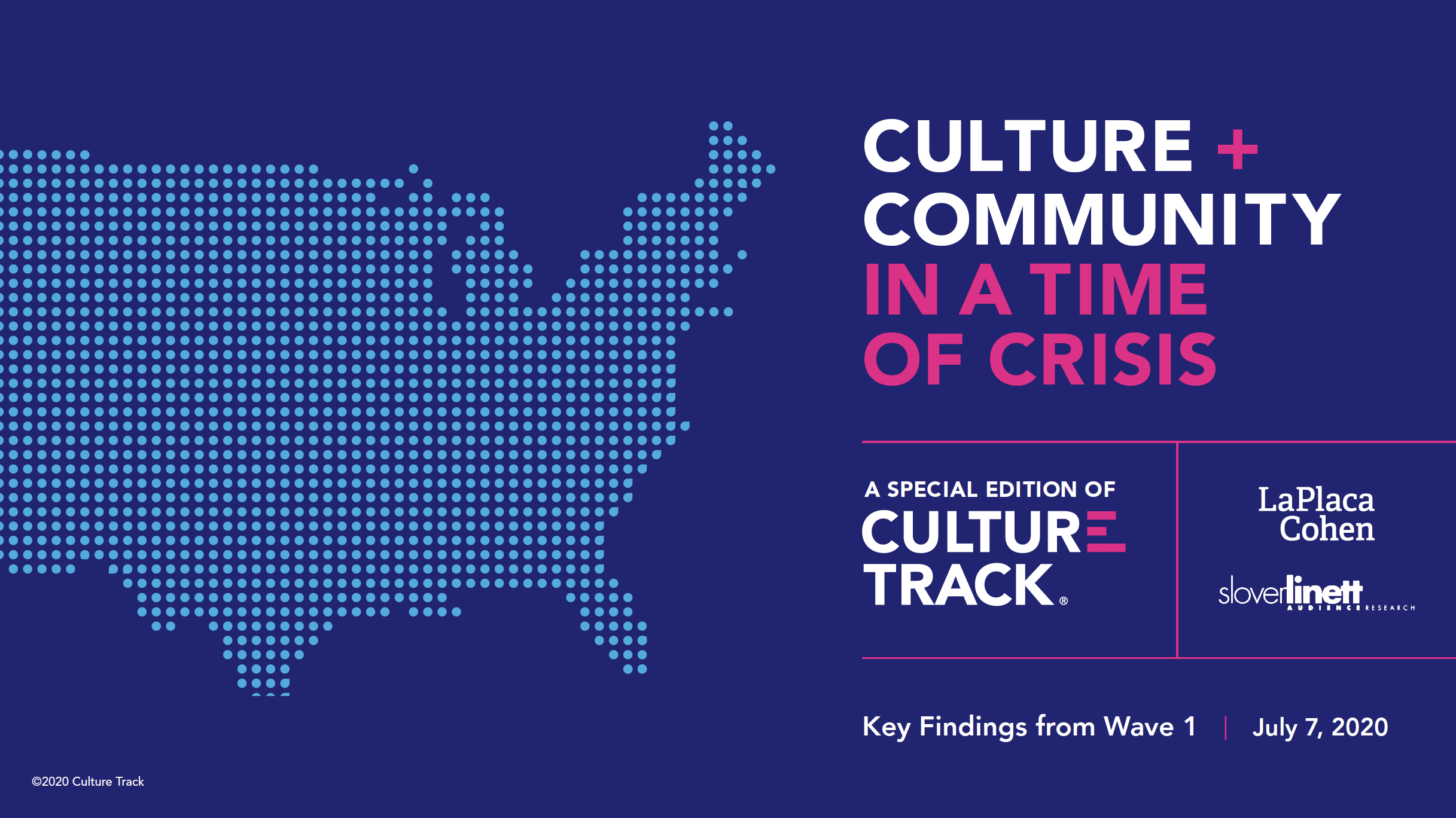Launched in the wake of 9/11, LaPlaca Cohen’s “Culture Track” is an initiative familiar with assessing public perceptions of cultural organizations in moments of national strife.
Its most recent survey, “Culture and Community in a Time of Crisis”, ranks as one of the most extensive conducted in U.S. history; 125,000 people spread across all 50 states and organizations ranging from Broadway mainstays to Middle America community art centers.
Part of a rolling series spread across 2020, this first wave survey was completed on May 19, i.e. before racial justice protests swept across the U.S., making its revelation that 3 in 4 respondents believe cultural organizations need to become more inclusive all the more poignant.
As the survey highlights, issues of diversity and accessibility are among a number of profound challenges facing cultural organizations. These span from their value proposition (how to become more fun and less serious?) to their financial stability (how to profit from digital content?) to their core function (how to become community focal points?)
In a recent webinar, Arthur Cohen, the founder of Culture Track, discussed some of the survey’s central findings with the Knight Foundation’s Victoria Roberts.
Here are Jing Travel’s takeaways.
Cultural Institutions Face Dual Crisis
Since May, a public health crisis has been compounded by an epidemic of racial injustice. Cultural organizations have a role to play. This begins with broadening their perspectives on racial justice and systematic racism and extends to including action steps on diversity and inclusion as part of recovery strategies.
Key Quote: Audiences are hurting right now, organizations need to understand the moment we are in and offer emotional support, a source of hope, and the idea of escape. Arthur Cohen, Founder and CEO of LaPlaca Cohen
Digital Transformation
The pivot to digital content has made cultural resources more accessible, bringing in previously disenfranchised audiences. The challenge rests with converting these online visits into physical ones as reopenings begin. The goal must be to break the “threshold fear”, the discomfort felt by visitors entering an unfamiliar or unwelcoming cultural space.
A further digital challenge rests with revenue generation. Cultural institutions have maintained their connections with audiences through online initiatives, but can they follow the lead of for-profit companies in creating financial models that monetize this content?
Key Quote: It’s a transformational moment for technology, beforehand, tech was in service of the tactile and the tactile was always primary, now there’s a parallel track, two different forms that can exist side-by-side. Arthur Cohen, Founder and CEO of LaPlaca Cohen
A More Inclusive Future
Audiences want cultural institutions to expand their role as community centers. This process starts with organizations lowering their authoritative tone and becoming hosts. This chimes with calls throughout the survey for cultural organizations to be less formal (17 percent) and more fun (28 percent).
Ceding a little control by creating programming based off the wants and needs of local communities would be a first step towards addressing issues of diversity and inclusivity.
Key Quote: A big theme is the idea of a cultural destination as a centre of community, partnerships are forming not just within the cultural world, organizations are reaching out and creating new networks. Arthur Cohen, Founder and CEO of LaPlaca Cohen



